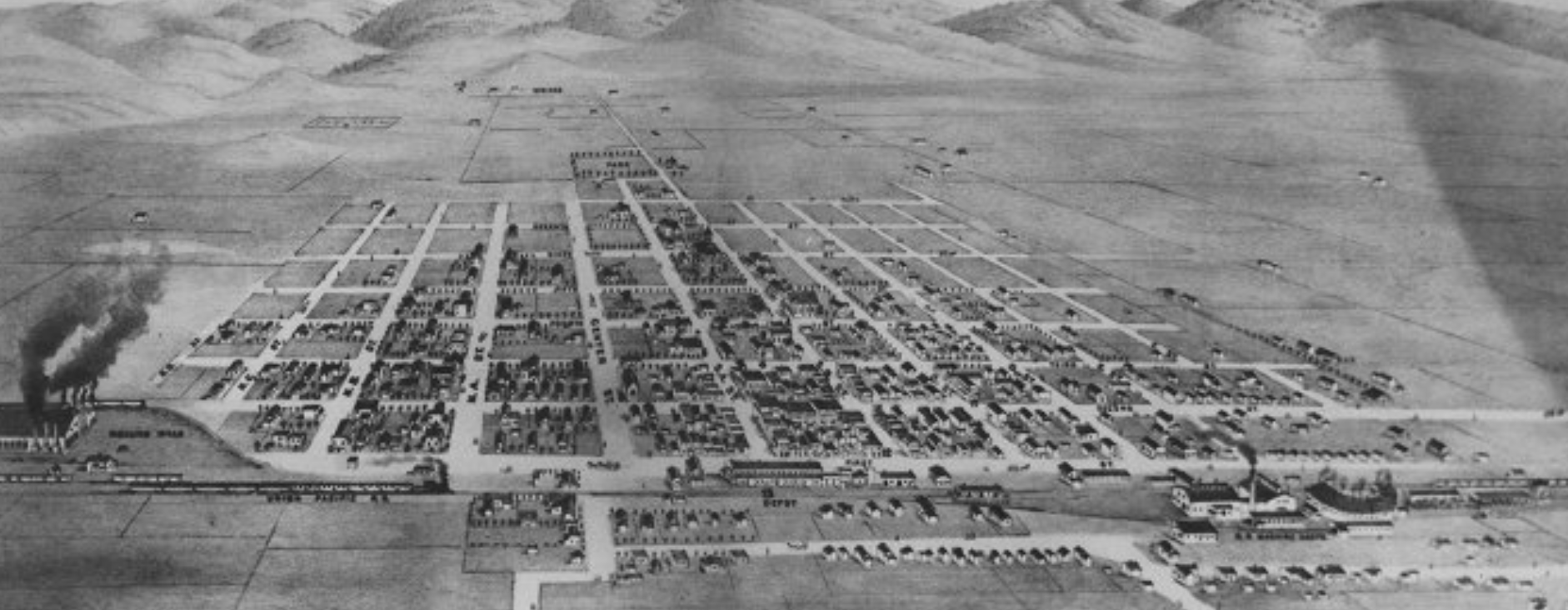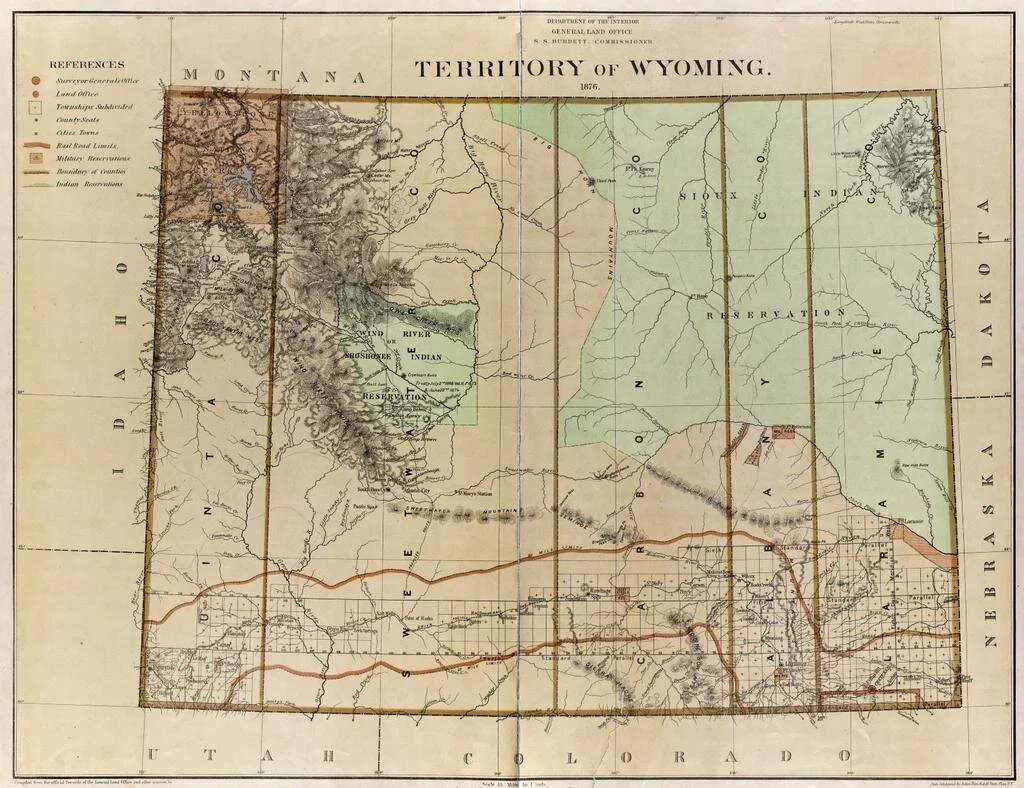Albany County, Wyoming’s New York connection
Laramie residents have little reason to remember a pioneer attorney who only lived in Wyoming Territory for a year and a half. As far as we know, he only came to Laramie once, and spent most of his time in the new town of Cheyenne and in Yankton, Dakota Territory.
However, Charles Bradley became a footnote in the history records when he convinced the Dakota Territory legislature to name the second of four counties in Wyoming Territory as “Albany” County. That was late in 1868, and though he remained in Cheyenne a few months after that, by early 1869 he had departed Wyoming Territory for good.
Bradley had been born in Albany, New York, in 1839. Educated at home, he passed an examination at age 15 to become a primary school teacher. Rules at the time prohibited him from teaching in New York, so he moved to Illinois where his sister lived and at age 16 taught school there for one year.
After returning to New York, he helped run the family farm and began to teach in the local schools. Shortly thereafter, he studied law with a local firm. By 1867 he had gained enough experience that the New York Supreme Court admitted him to the New York Bar, according to Izumi Otori of the website Genealogy Trails, where research on Bradley’s biography is posted.
Rather than choosing to practice law in his home state, he decided to move west, arriving in Colorado in July 1867. Working for the New York Mining Company for a short period must have been not to his liking as he then moved to Cheyenne, Dakota Territory, in September. While there he established a successful law practice.
Soon he had political ambitions and on October 13, 1868, he was elected to the Dakota Territory legislature which was meeting Yankton (in what is now South Dakota). Likely due to his experience as an attorney, he was appointed to the powerful judiciary committee. Bradley’s tenure in the Dakota Territory would be important for the future of Wyoming Territory. Despite Wyoming Territory being created in July 1868, it was not fully “organized” until May 1869 when President Grant appointed Wyoming Territory officials. In the interim, Dakota Territory laws were in force.
Bradley’s affinity for his hometown of Albany, New York, was demonstrated on December 9, 1868, when he introduced a bill to create Albany County. On the same day he introduced a bill to incorporate Laramie City. Bradley, who was praised as “among the very finest attorneys in the House” by the Dakota Territory newspapers, was familiar with the newly settled area around Laramie City as he was in the Laramie area in mid-June 1868, a month after the Union Pacific tracks reached Laramie.
Dakota Territory approved the bill for Albany County on December 16, 1868. Likely based on Bradley’s recommendation, the act appointed county commissioners J. W. Collins, Fred Laycock and T. J. Roth. Among other officials appointed were sheriff Thomas D. Sears, probate judge M.C Page, constable A. Trabing, district attorney J. L. Kerr and coroner J. H. Finfrock.
Immediately thereafter, the bill incorporating Laramie City was passed naming M.C Page as mayor and aldermen Edward Ivinson, C.A. Wright, M. L. Ohr and W.S. Walker. J.W Donnellson was appointed treasurer and John LaFaver marshal. All county and city appointed officers were to retain their positions until the first Wyoming Territory vote in 1869.
However, when Wyoming Territory was formally organized in May 1869, Governor John Campbell deviated from that and appointed all the county officials. County officials were finally voted into office on September 6, 1870. While the 1869 newspapers for Laramie have been lost to history, it is possible city officials were elected as early as September 2, 1869, as witnessed by city elections held in Cheyenne on the 2nd. The 1869 election was also for Wyoming Territory Delegate to Congress and for the seats of the first session of the territorial legislature.
Bradley was not there to witness the election, however--he had already moved away from Wyoming Territory by March of 1869.
The bill of incorporation for Laramie City was repealed by the Wyoming Territory legislature in November 1869. The reason for the repeal is not readily available. Eventually the Wyoming Territory legislature passed an act of incorporation that became effective on January 13, 1874. A vote for city officers was held that month. Apparently, the city was without elected officials from 1869 to 1874.
Bradley returned to Cheyenne after the Dakota Territory legislature adjourned on January 15, 1869 and remained there through the end of February. He then moved to Iowa where he was in the cattle business for two years before bankruptcy forced him to return to the practice of law.
His next move was to St. Louis where his reputation led to appointment in 1875 as the United States Attorney for the Colorado Territory. After his arrival in Colorado, Bradley was instrumental in providing legal advice to the Colorado Constitutional Convention in late 1876. He remained in Colorado until his death in Florence in 1919. It is unclear whether he ever returned to the county that he named in 1868 or its county seat.
Today there are 28 cities and counties in the U.S. with the name Albany, not counting Albany, Wyoming, an unincorporated town. There are also six international sites with the name Albany, three in Canada and one each in Australia, New Zealand and South Africa. It is tempting to say that Laramie’s street named Bradley is for Charles, however, in keeping with other streets named for generals, it is probably for Luther Prentice Bradley, (1822-1910), who commanded an Illinois Civil War Regiment.
By Kim Viner.
Editor’s note: Thanks to Izumi Otori of genealogy trails for the basic bio info and to Judy Knight for additions to the story.
Charles Downing Bradley. Image appeared in Colorado Magazine in 1951 long after his death
Laramie in 1875
Albany County in 1876 showing its original shape as created by Dakota Territory in 1868.


